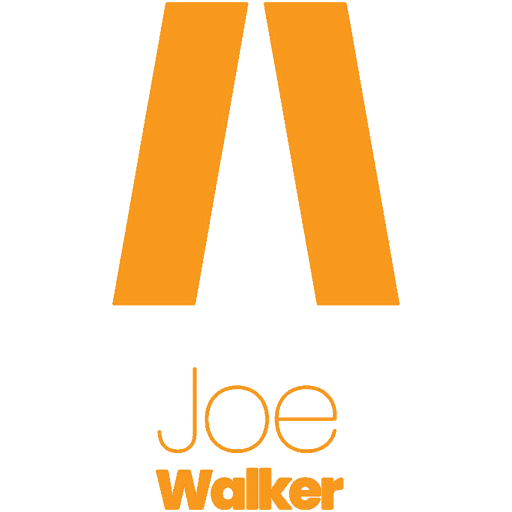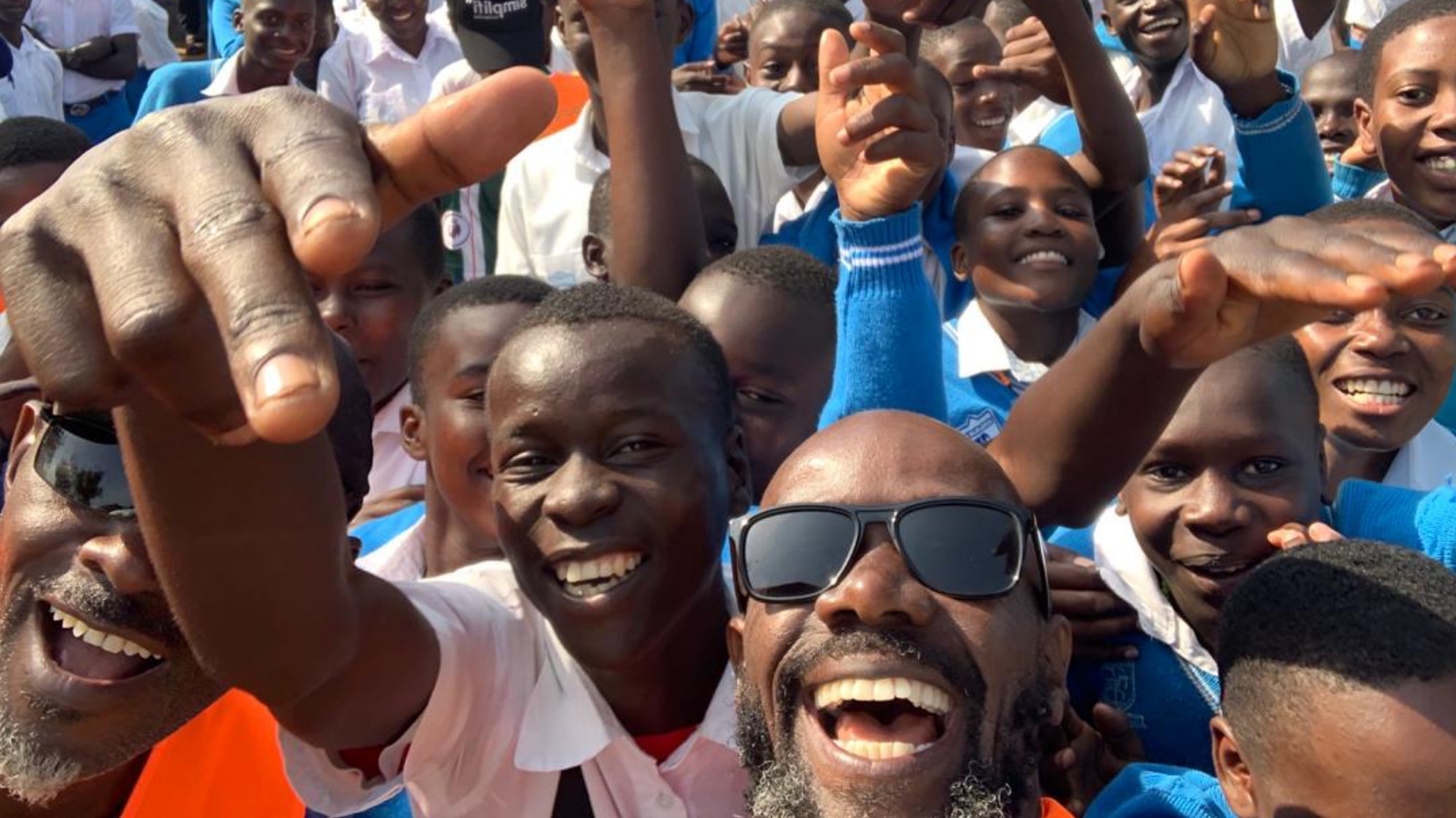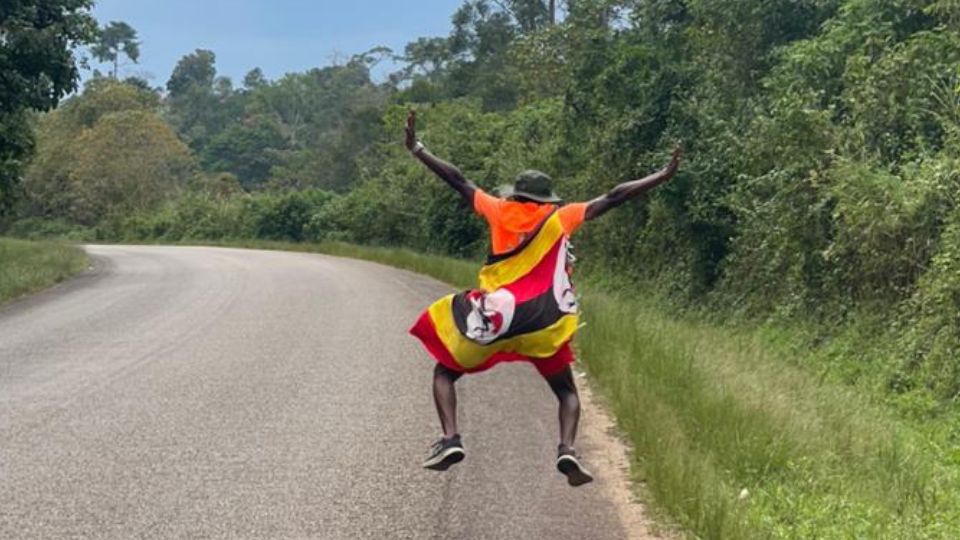
Kampala to Mbale walk: What we saw, heard and how to make our roads safer
The #JoeWalker Kampala to Mbale trek was a different challenge from what we had done earlier. It was a shorter route, but a rough road for half the journey, and had more reckless drivers and harsher weather conditions. It also had however, rich and insightful engagements.
Pedestrians
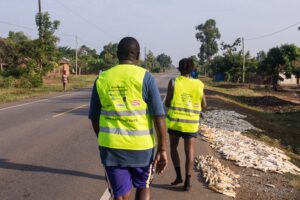
As we streamed out of Nakawa eastwards, we were embarking on a rough unfriendly road that would be our cup of tea for the next 125km till we got to Tirinyi Road. With more people walking than cars on the road, the experience of a pedestrian on most of our roads is still a nightmare. The footpaths next to the road have deep trenches, very uneven surfaces, and with taxis looking for passengers stopping anywhere and everywhere. There are no walkways, and speeding cars keep harassing you from the front and the back squeezing you off the narrow footpath, sometimes pushing you into the trenches. When we got to the Kakira sugar plantation, one of the walkers, Andrew Mwanguhya remarked that he only felt safe when there were cars driving towards us because there would be no crazy drivers to push us into the bush as they tried to overtake on narrow stretches. It’s no surprise that pedestrians form the biggest percentage of victims of road crashes.
Schools

The Kampala to Mbale route is dotted with many schools, especially around the urban settlements. In the early morning and evenings, we met several children rushing and crisscrossing to or from school. During all the interactions with the school-going children, it was clear that those who have to cross the roads daily are living in constant fear just like a deer that feels trapped in a lion’s den. Even where there are signs of schools ahead, motorists don’t care at all. The speeds are crazy and dangerous. Children told us painful accounts of their fellow pupils who had been mowed down by speeding motorists. What’s the point of putting up a “School Ahead” sign and not putting in place any measures to enforce the speed limits? Sadly also, not all children understand the meaning of road signs, and they do not have high expectations of our drivers either.
Taxis
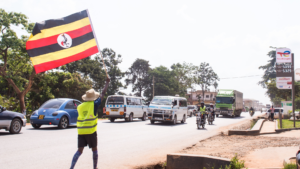
Listening to drivers and stage masters in the Jinja taxi park was heartbreaking. “Narrow poor roads, broken leadership structure, unqualified inexperienced unruly undisciplined young drivers being entrusted with passenger vehicles, unknown drones roving the routes loading passengers on streets, poor quality of spare parts that break down after a few days…” were just some of the complaints they had. But the more I heard their complaints the more I saw the chaos on the roads. I kept wondering who is in charge of managing and organising public transport. Who benefits from the chaos amongst the taxi community? Who is in charge and allows such chaos to thrive? And how does all this affect the safety of passengers? Is it surprising then that we are seeing huge numbers of casualties in passenger vehicles?
Boda Bodas

Now, if you thought things are chaotic in the taxi community, you need to listen to the Boda Boda riders. Goodness me….even the Boda guys themselves are livid. Their issues start from expensive and unaffordable driving permits, and harassment by Police, to unhealthy rivalry from taxis and rogue riders who don’t belong to any stage and are a law unto themselves. When I asked them why they think Police demands that they have driving permits, they all say it’s about money. When asked how they learnt how to ride, none we spoke to have ever gone to a driving school let alone heard of a driving school that offers skills to boda boda riders. These were chorus answers from Mukono, Jinja, Iganga and Mbale. Does it still shock you that motorcycles account for more than 25% of the fatalities of road crashes?
Private cars
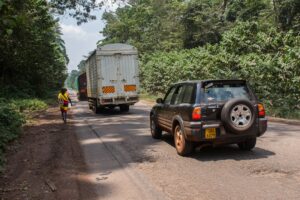
We love pointing fingers at the taxi drivers, and boda boda riders and we forget the private SUVs and salon cars. Be it the big nice government cars, private cars or the NGO cars, our conduct on the road is deplorable. Speeding, inconsiderate use of the road, reckless overtaking is what we are known for. And we seem to do it worse than anyone else. It’s total madness. Your car may have great safety features but it’s not a guarantee for you to fly. Think about other road users and your own safety.
Roadside communities
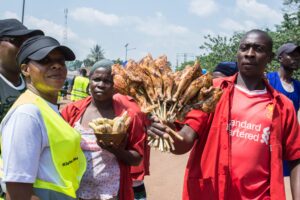
Our roads have many conflict points (areas where many road users meet on the road) including potholes, unmanned junctions, school zones, built up areas and many more, all punctuated by careless and reckless speeding drivers. The cries of the people who live and operate next to, or across the roads are the same: “Cars are killing us! Tell them at least to put humps to reduce the speed. They should erect pedestrian walkways for us so that we can safely take our kids to school without boda bodas and cars knocking us. Speeding trailers and VIPs have finished our animals…” Those were the pleas from Lugazi to Mbale. We were also told of stories of roadside hawkers who have been knocked by speeding cars into early graves and others into wheelchairs. With these markets established in the road reserves and others illegally propping up in various places, the conflict between the road users and the nearby communities are all inevitable. So for how long shall we watch on as we continue to lose people to road traffic crashes?
The roads
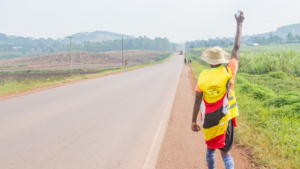
I hate lamenting. But I am struggling to look for something to appreciate about the road between Kireka and Njeru just before the Jinja new bridge, and then the road from Kakira sugar plantation to Iganga. They are potholed, narrow, with no signage, faded or no markings, no place for pedestrians or cyclists, and no stops for passenger vehicles. At least the Tirinyi Road is a breath of fresh air save for the signage which has been vandalised and stolen, and no structural measures put up to ensure safety of other road users more especially pedestrians, school children and other special categories. It’s clear the road is designed and constructed for only motorists.
What next
- Teach the Road and Traffic laws and guidelines to children when still young so that when they grow up and are driving, road discipline will be second nature to them.
- Install appropriate road signage and ensure there are inbuilt enforcement structures (including speed cameras, speed humps etc.) within the road design.
- Enforce discipline and order in the public transport starting with who qualifies to be an operator in the taxi parks, and provide specific locations for passenger loading.
- Set clear leadership structures and systems for all public transport sectors including boda bodas and taxis.
- Review the process and cost of driving permits for boda boda riders; make it simple and affordable.
- Streamline and standardise the process one goes through to acquire a driver’s license and make it measurable, traceable and predictable to ensure that only qualified people get behind the wheel on the road.
- Whether the road is under construction or not, use signage. We shouldn’t have any road without proper signage and markings in this time and age. It’s absolutely dangerous.
- Provide strict measures to ensure the road-side communities and pedestrians are protected and speed limits enforced in urban settlements. These should be embedded in every road design.
- Road junctions and intersections need to be made safer; special attention should be given in determining the type and shape of the junctions. Most of them are rather sharp and do not seem well thought out… which is probably why most of the crashes happen at junctions.
